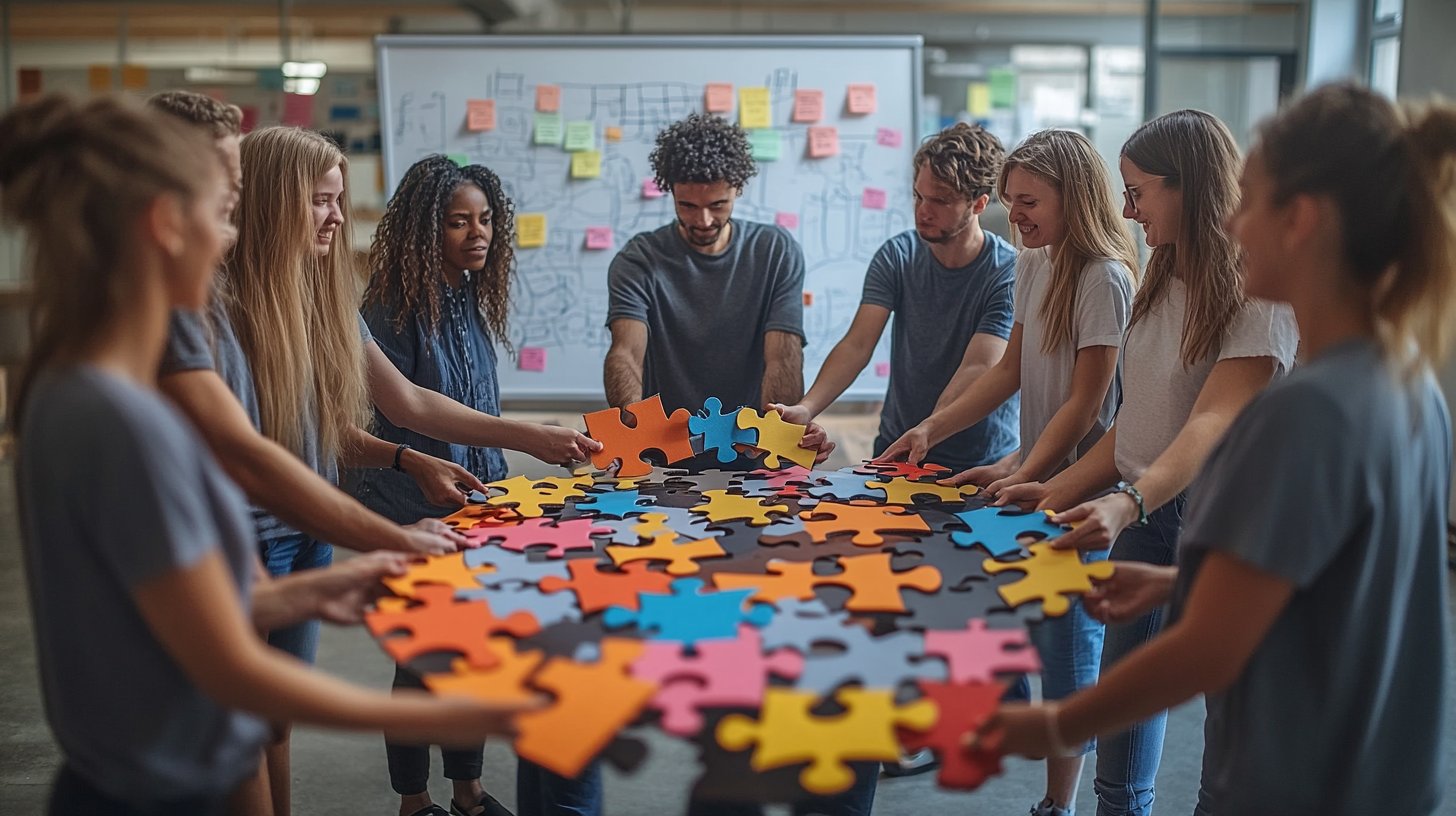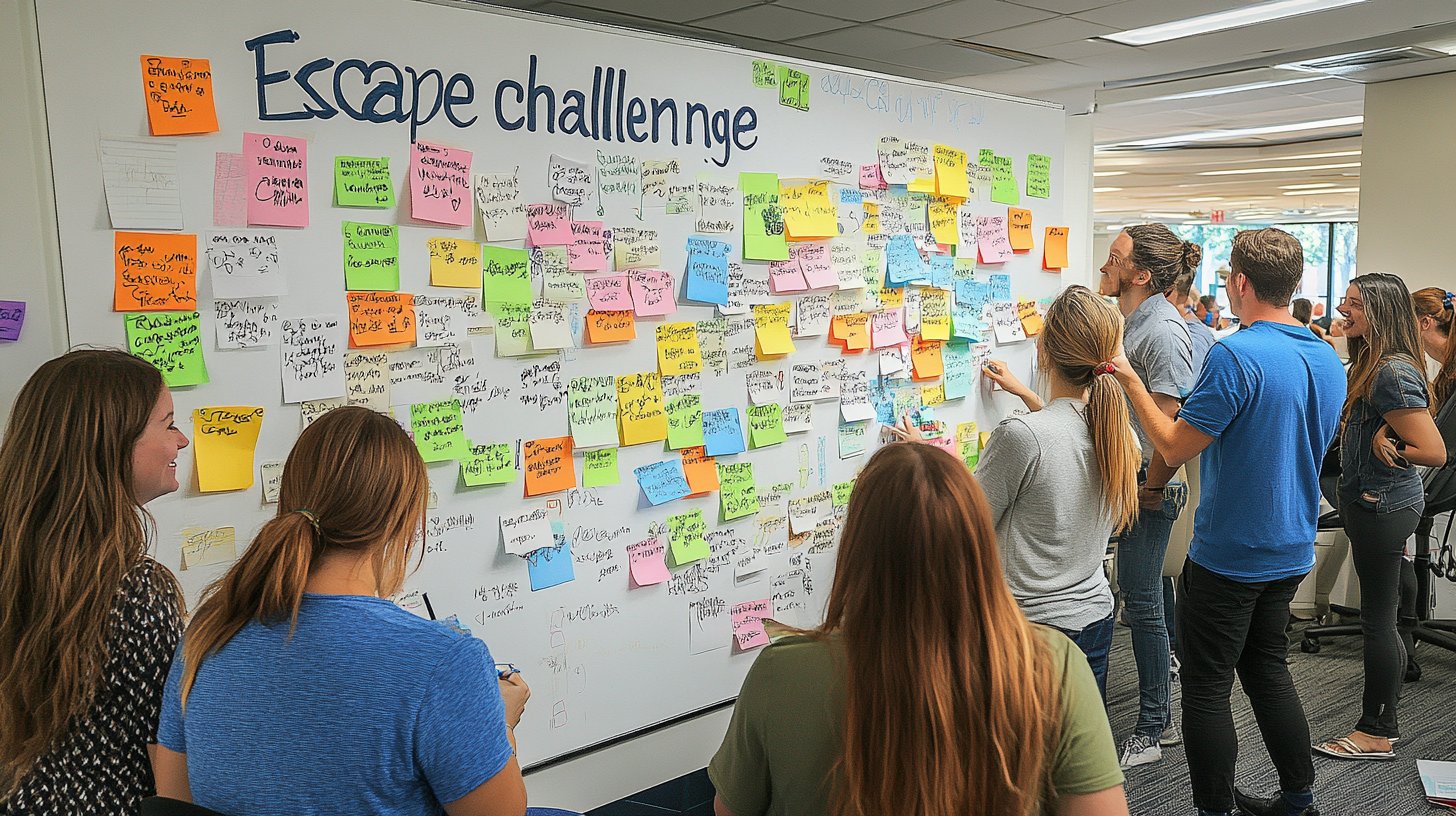Finding the formula for a successful team building event can sometimes seem complex. You may want to strengthen cohesion, improve communication, or motivate your teams, but where should you start? Organizing such an event requires a clear vision and precise preparation. Your employees have specific needs, and you want each activity to have a tangible impact.
How can you ensure engagement and avoid unforeseen issues? This guide is designed to meet your expectations: detailed planning, activity ideas, and tips to maintain momentum. You deserve an approach tailored to your goals and your team’s profile. Together, let’s uncover the keys to a team building event that makes a difference.
Define Specific Goals for Team Building
To successfully organize a team building event, the first step is to clearly define your goals. Are you aiming to improve communication among employees, boost team motivation, or promote team spirit? Once these goals are identified, selecting appropriate activities becomes easier.
For instance, to encourage collaboration, games requiring teamwork are highly enriching. If the goal is to build trust, self-challenging exercises may be considered. Clear objectives help keep participants engaged and motivated throughout the event.
Common Goals Include:
- Improving communication among team members
- Building mutual trust
- Increasing team motivation
- Developing problem-solving strategies
- Promoting creativity and innovation
Detailed Event Planning
Good planning ensures a smooth and enjoyable experience. Several factors must be considered: choosing the venue, scheduling activities, and addressing logistical needs such as required materials and meals. Thoughtful attention to these details helps prevent surprises and focuses on the event’s success.
Adapting the program to the specific needs of each group significantly increases engagement and satisfaction. The schedule should balance intense activities with moments of relaxation.
Choose Team Building Activities
Activity selection primarily depends on the defined objectives. Different options offer various benefits, whether it’s solving problems, strengthening team cohesion, or enhancing communication. Here are some popular activity categories:
Games and Interactive Activities
Games and interactive activities are excellent for making team building engaging and fun. They foster active participation and develop essential skills like cooperation and communication.
Classic games like treasure hunts or escape rooms require intensive collaboration among participants. Other activities, such as collective construction (e.g., building a bridge with simple objects), highlight the importance of each member in achieving a common goal.
Sports and Outdoor Adventures
Physical activities and outdoor adventures add an exciting dimension to team building. They are particularly effective for boosting trust and team spirit. Activities like zip-lining, canoeing, or even hiking demand perfect coordination and constant support among teammates.
The positive effects of outdoor activities should not be underestimated. They help relieve tension, improve communication among employees, and stimulate creativity.
Creative and Cultural Workshops
To inspire innovation and uplift the spirit, creative workshops are ideal. These include painting sessions, cooking classes, or artistic performances where everyone can freely express their talent. Such activities create unique bonds among colleagues through shared, relaxed experiences.
Incorporating cultural elements adds educational value. Guided tours, local culinary tastings, or historical presentations enrich the experience while fostering connections and sparking conversations.
Example Planning Table
| Time | Activity | Description |
|---|---|---|
| 09:00 – 10:00 | Welcome and Introduction | Presentation of team building objectives and explanation of the day’s schedule |
| 10:00 – 12:00 | Team Role-Playing Game | Teams solve problems together through specific scenarios |
| 12:00 – 13:00 | Lunch Break | Informal lunch for open discussions |
| 13:00 – 15:00 | Sports Challenge | Athletic events to strengthen cohesion and endurance |
| 15:00 – 17:00 | Creative Workshop | Group painting session to foster creativity and collaboration |
| 17:00 – 18:00 | Debrief and Closing | Discussion on lessons learned and participant feedback |
Facilitation and Dynamics During the Event
Hosting a team building event relies heavily on the ability to engage participants. The facilitator plays a key role in encouraging participation, maintaining dynamics, and managing potential conflicts. An enthusiastic and experienced facilitator makes a significant difference.
Investing in specific training for facilitators can be highly beneficial. They will learn various techniques to captivate the audience and ensure all voices are heard. Inclusive methods promote a productive session where everyone actively participates.
Encouraging Continuity After the Event
The positive effects of a team building event should last well beyond its conclusion. To achieve this, regular follow-ups are essential to capitalize on the progress made. Periodic meetings can reinforce positive behaviors and make adjustments as needed.
Managers can also implement rewards and recognition to highlight team efforts. This maintains motivation and strengthens professional relationships. Small, consistent gestures significantly help preserve the initial enthusiasm.
Organizing and hosting a team building event requires meticulous preparation and a touch of creativity. It involves selecting the right activities aligned with clear goals while ensuring proper facilitation to maximize participant engagement. The results are well worth it: enhanced team cohesion and improved communication significantly ease corporate collaboration.
By investing in quality events and ensuring meaningful follow-up, it’s possible to transform internal dynamics sustainably. The success of a team building event lies in thoughtful organization, inspired execution, and intelligent follow-through to extend the positive interactions created during these occasions.








